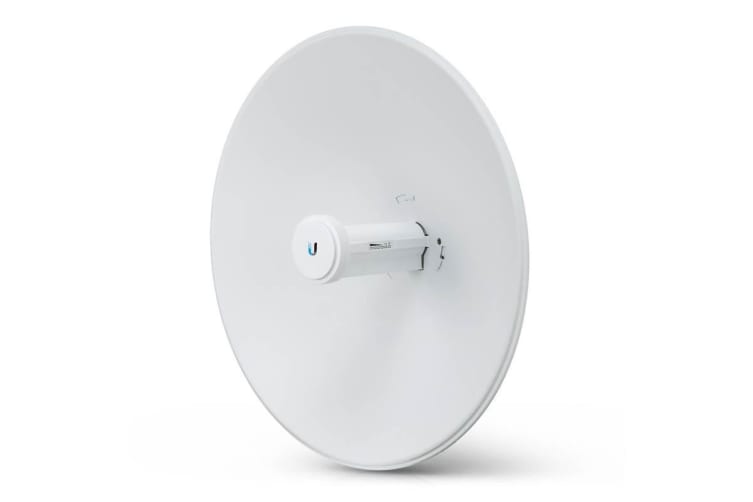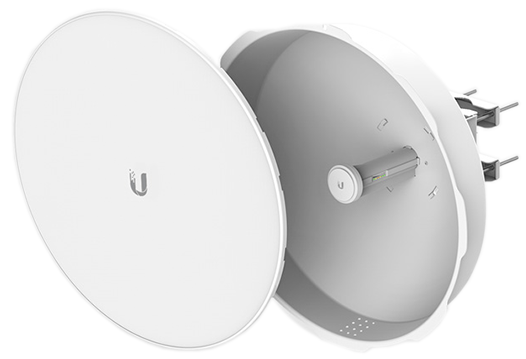This page has been designed to assist first-time WAFN-ers to connect to the WaFreeNet. Please note that all advice given here is a guide, and may not be appropriate for your situation - but one of the fun things about joining the WAFN is finding out what works for you, and what doesn't!
Quick Start
The WAFreenet uses Ubiquiti Radios, These radios are Reasonably Priced and Provide us with use of the AirMAX Protocol, Allowing for QOS to be implemented very easily.
Ubiquiti is the only radio that will connect in to the network, No matter how good your Home Router is, It will not Connect Wirelessly to the Network, But you may be able to use it as a Ethernet Router and participate in Dynamic Routing
For most links Up to 15Kms the use of a PowerBeam 5 AC Gen2 (420) is Suitable.
With links up to 30Kms the use of an Powerbeam AC500 is suitable
For links over 30Kms The use of a Large antenna (AC620 Is recommended) This antenna needs a strong mounting point and is not suitable for mounting to existing un-guy-wired Television antenna poles. It is recommended that a Guy wired Mast of 30mm Minimum Width is used.


So what is an Access Point (AP)?
The WAFN has approximately 8 major routing APs located around the Perth area. These APs operate in an ISM band between 5.5GHz and 5.8GHz. Most standard home ADSL modem/routers generally also operate in this band at around 2.4GHz. The 2.4GHz frequency is no longer used on the WAFN network due to the noise levels generated by home AP's which 'leak' radio signals into their immediate area and make long distance links impossible, or significantally harder. Vivid Wireless also operate a commercial internet service that uses the 2.3GHz and 2.5GHz frequencies for transmission.
AP's have either a 'panel', 'base' or 'omni' antenna, which is capable of serving multiple clients in a pattern larger than 6 degrees (6 degrees is the average beam-width of a dish antenna). These antennas generally have 30, 90, 120, 180 and 360 dgrees of beam-width.
A node is a client end device such as a dish or small sector antenna, which has a narrower beam-width and can provide good performance on a Point-to-Point link.
Hang on - what is beam-width?
AP's on the WAFN mostly have 90 or 120 degrees of beam-width. This means anyone within the beam-width covered by the antenna can connect to the AP.
For example: if you were located in Fremantle and you wish to connect in, your closest node would be Rottnest (RIF). RIF has a 120 degree sector-antenna, which is aimed to Ocean Reef at 0 degrees and Mandurah at 120 degrees. As Fremantle falls within this beam-width, you should have no problems connecting!
Right, but what equipment do I need?
The equipment you may need will depends on a few factors:
- How close the AP is to you;
- Do you have clear line-of-sight;
- How capable is your mast of supporting equipment;
- Council regulations governing antenna/mast installation;
- Channel availability on your preferred AP.
The answers to these questions will vary and affect the type of antenna and mast you may need. Please keep in mind that even though you may be able to see the AP, it doesn't always mean you can connect to it. Several factors come into play here, the main one being the fresnel zone which requires a certain amount of 'free space' around a radio link to ensure error-free transmission. As a general rule, you should also contact the maintainer of your preferred AP and ask for their advice regarding what equipment to purchase and how to create a link.
WAFN recommends and uses Ubiquiti Networks AP's and CPE Devices.
WAFN use these for a number of reasons:
- Better network utilisation (airmax)
- Low purchase price (starting at $100)
Ubiquiti's overview - Which product should i use?
There is a move to new AC radios, so it is recommended to ask in the Discord channel for suggestions.
Common equipment used on the WAFN, in a top-to-bottom best-to-worst list, is as follows: NEEDS UPDATING
- Ubiquiti PowerBridge M5 (PBM5) - This is the 'beez neez' and will do for any situation.
- Ubiquiti Rocket M5 + Airmax Sector - These are used for Base Stations/AP's. They come in 90 and 120 degree versions, and are not for node use.
- Ubiquiti Rocket M5 + RocketDish - This requires a engineered pole installed to support it, and are suitable ONLY where a very heavy duty mast is installed. However, they are very good for long range PTP links.
- Ubiquiti Bullet M5 + 24/27dBi Antenna - These will do 50km+, but are single polarity.
- Ubiquiti NanoBridge M5 (NBM5) - Good for 0-10km with good throughput overall, but will perform the best for links under 10kms with good LOS.
- Ubiquiti NanoStation (NSM5) - Good for 0-10km. Has the advantage of being dual polarity, but as the expense of a lower gain antenna compared to the NanoBridge M5. These are low profile and recommended for housing estates with strict regulations around the installation of antennas.
- Ubiquiti NanoStation LoCo5 - These are only good for 0-3km installs, and are currently not used anywhere on the Freenet.
Please note that your home AP, router, modem, etc., is not compatible with the Freenet. These devices are designed to distribute signals over a small area (~100m), and are unsuitable for long range linking as performed on the Freenet.